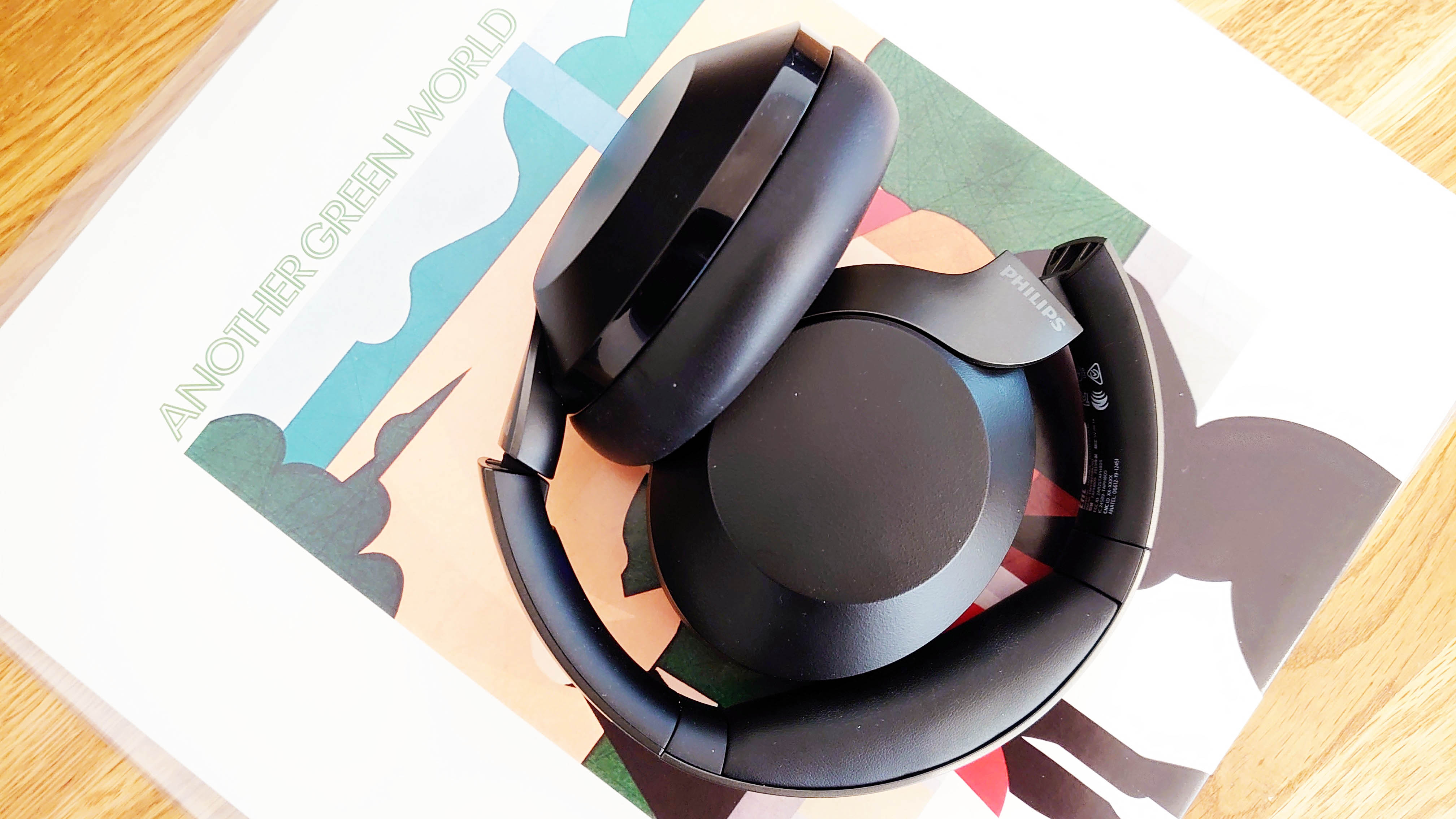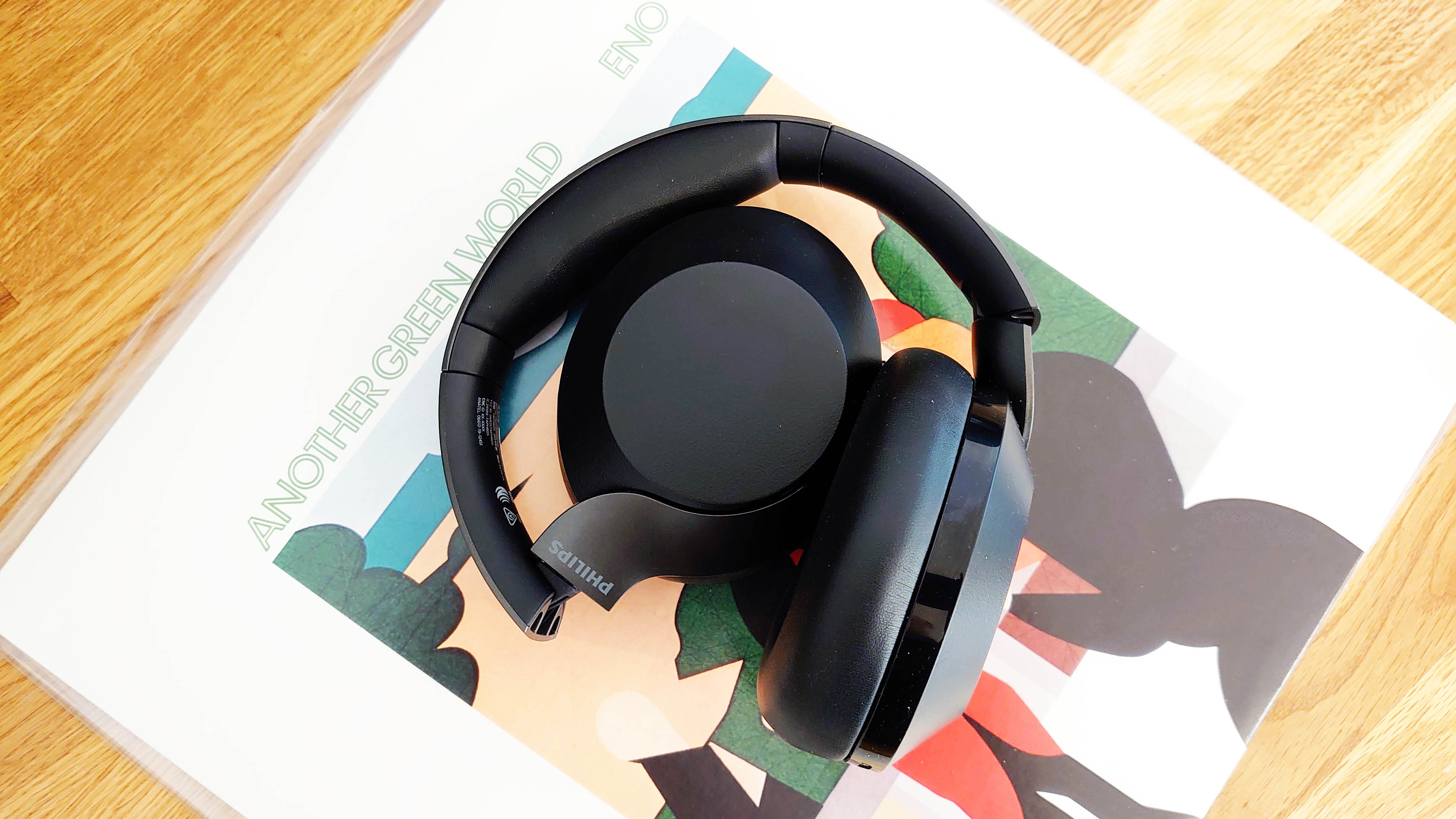TechRadar Verdict
Where materials, build and sound are concerned, these Philips headphones are better than their price suggests. Active noise-cancelling lets the side down just a bit, though.
Pros
- +
Well made
- +
Good battery life
- +
Punchy, controlled, and detailed sound
Cons
- -
Noise cancelation could be more effective
- -
Not the most dynamic sound
Why you can trust TechRadar
Of course it’s nice to be able to just throw money at your tech requirements. After a pair of wireless noise-canceling over-ear headphones? Just toss $350 or so in the direction of Bose, or Sony, or AKG, or Bowers & Wilkins, and job done – some really expensive, but really good headphones are yours.
You may not be as cavalier as that, though. You may be a bit more judicious - and, after all, ‘the most expensive’ doesn’t necessarily equate to ‘the best’ and hardly ever equates to ‘the best value’. So what can you do if you want the best value noise-canceling over-ear wireless headphones without going anywhere near ‘the most expensive’?
You should consider the Philips PH805s, that’s what. As far as value for money goes, they’re currently about as good as it gets.
Price and availability
They Philips PH805 are available to buy for $199 / £160. That works out at around AU$290 based on current conversion rates, however, we're still waiting for confirmation of Australian pricing.
That's cheaper than the best noise-canceling headphones of 2019, the Sony WH-1000XM3, which cost $349 / £300 / AU$499 at launch. They're more closely matched to the JBL Live 650BTNC, which come in at $200 / £180 / AU$250.

Design
You know how some films are ‘inspired’ by a book or ‘inspired’ by true events? Well, it looks very much like the Philips PH805s are ‘inspired’ by Sony’s lauded WH-1000XM3 wireless noise-cancellers.
It’s true that over-ear headphones tend to look pretty similar, and it’s a brave (or foolhardy) manufacturer who tries anything too radical in terms of design. However, there’s such a strong suggestion of the Sonys about the PH805s, especially around the contours of the earcups, that it seems Philips is not so much ‘inspired’ by the WH-1000XM3s as paying homage to them.
In any event, though, the PH805s are good-looking and nicely understated. Everything that’s meant to move does so smoothly, and the quality of materials used feels high.
Admittedly, there’s not the premium design that $399 / £350 / AU$599.95 spent on a pair of Bose Noise Cancelling Headphones 700 buys you, but nothing about the way the Philips’ look or feel is going to make you wish you’d spent twice as much money.
Features
The headlines here are obvious, right? These are wireless headphones, using Bluetooth 5.0 for connectivity – so high-resolution audio playback should be achievable. They’re battery powered, using a single Lithium-Ion cell for up to 30 hours of playback time from a single charge. They also have active noise cancelation on board, administered by a couple of mics on each earcup.
There are three modes of noise-cancelation: ‘on’, ‘off’ and ‘ambient sound’. The first two positions ought to be self-explanatory, while ‘ambient sound’ gives a dramatic reduction in music volume while giving a gentle boost to external sounds.
Most of the interaction with the PH805s takes place using the right earcup. There are some touch controls on the face of the ‘cup – swipe up to increase volume, swipe down to decrease, and tap once to cycle through the three stages of noise cancelation.
There's also a push/slide control at the rear edge of the earcup – press and hold for power on/off, or give it a short press to initiate Bluetooth pairing. If you’re already paired, the same short press will summon your voice assistant of choice (again, there are mics on both earcups to facilitate this). Or slide it forwards to skip forwards, or - hey! - back to skip back.
The right earcup even has a 3.5mm input for use with the cable should the worst happen and your Philips’ run out of power. On the left-hand side, there’s just a lonely microUSB socket – Philips reckons you can get two hours of playback time into the PH805s with just a five-minute charge.
No matter how you get music on board the PH805s, though, it’s delivered by a couple of 40mm free-edge full-range drivers. To keep those drivers a comfortable distance from your head, the Philips’ earcups are generously padded with memory foam, while the headband is not quite so generously padded too. Getting comfy inside the PH805s isn’t difficult – their 235g weight sees to that – although it must be said those earpads do seem to heat up a little bit quicker than most rival designs.

Performance
As observed, support for Bluetooth 5.0 can only be a good thing. As well as offering superior battery life, it’s also good for getting full-fat MQA-powered TIDAL Masters files on board the headphones – so in the interest of giving the 805s every chance, that’s how our testing starts.
Stormzy’s Heavy Is the Head (via the TIDAL app on a Sony Xperia 5 Android smartphone) has a little bit of everything. At the bottom end it’s big and bold, which is exactly how the Philips’ make it sound – but the hefty low frequencies are well controlled, packed with detail and texture, and don’t cramp the information above them. Instead they hit hard and fast, and don’t overstay their welcome.
At the opposite end of the frequency range there’s equally good news. Some of this recording’s high-frequency bite and crunch has been rounded off just a little by the 805s, but there’s still more than enough attack to make up for the slight shortfall in crispness.
In between those extremes, the midrange is communicative, deft and packed with the sort of detail that gives a vocalist real character. Every plosive and sibilant, every breakneck turn of phrase, every snigger and sneer is delivered in full and with its intentions made explicit. The Philips’ are poised and controlled enough to make this torrential level of communication unhurried and easy to follow.
From those rolled-off highest frequencies to the weighty low-end stuff, the PH805s integrate the whole of the frequency range really well. It might seem obvious when the whole frequency range is being produced by one full-range driver, but there are enough headphones out there that don’t have this kind of even-handed frequency management to make the Philips’ sound impressive in this respect. Only the top end is slightly reticent – everything else is coherent and unified.

Stepping down decisively (in terms of both file size and recording quality) to a Spotify stream of The Velvet Underground’s unhinged I Heard Her Call My Name allows the PH805s to double down on all their strengths while revealing a couple of incidental shortcomings.
Bass power, midrange fidelity, and high-end good taste are all in evidence, even when the tune periodically collapses into a howl of electrical noise-making. However, the best headphones around give more expression to the wild dynamics of the recording than the PH805s seem capable of doing.
This is a tune that intentionally loses control throughout, and the best headphones can make it sound authentically oppressive and intimidating. The 805s aren’t exactly laid-back when dealing with this song, but they don’t have the broad dynamic talent to really make the most of its threat.
The only other area where the Philips’ seem demonstrably less capable than those alternatives that cost twice as much is where their active noise-canceling is concerned.
There’s just not what you’d call a huge difference between ‘off’ and ‘on’ – ‘on’ brings some reduction in outside noise, certainly, but it doesn’t come anywhere near reducing the sound of a train or an aircraft by any significant amount. If your priority is on isolation rather than audio fidelity, the PH805s are almost certainly not for you.
The rest of us should give them proper consideration, though. They cost not much more than half of what a pair of Sony WH-1000XM3s cost, they look mightily similar, and they aren’t far behind where sound is concerned, either.
Final verdict
‘You get what you pay for’ isn’t always true – and the case of the Philips PH805s, you get quite a bit more.
Build quality and sound quality are really impressive, and battery life is very decent too. It’s really only when you consider noise-cancelation that spending any more than this seems an even remotely sensible thing to do.
However, if you're all about sound quality, you won't be disappointed by these great value wireless headphones.
- The best wireless headphones: our pick of the best ways to cut the cord
- Check out our Philips promo codes to get the best deal on your next purchase.
Simon Lucas is a senior editorial professional with deep experience of print/digital publishing and the consumer electronics landscape. Based in Brighton, Simon worked at TechRadar's sister site What HiFi? for a number of years, as both a features editor and a digital editor, before embarking on a career in freelance consultancy, content creation, and journalism for some of the biggest brands and publications in the world.
With enormous expertise in all things home entertainment, Simon reviews everything from turntables to soundbars for TechRadar, and also likes to dip his toes into longform features and buying guides. His bylines include GQ, The Guardian, Hi-Fi+, Metro, The Observer, Pocket Lint, Shortlist, Stuff T3, Tom's Guide, Trusted Reviews, and more.

